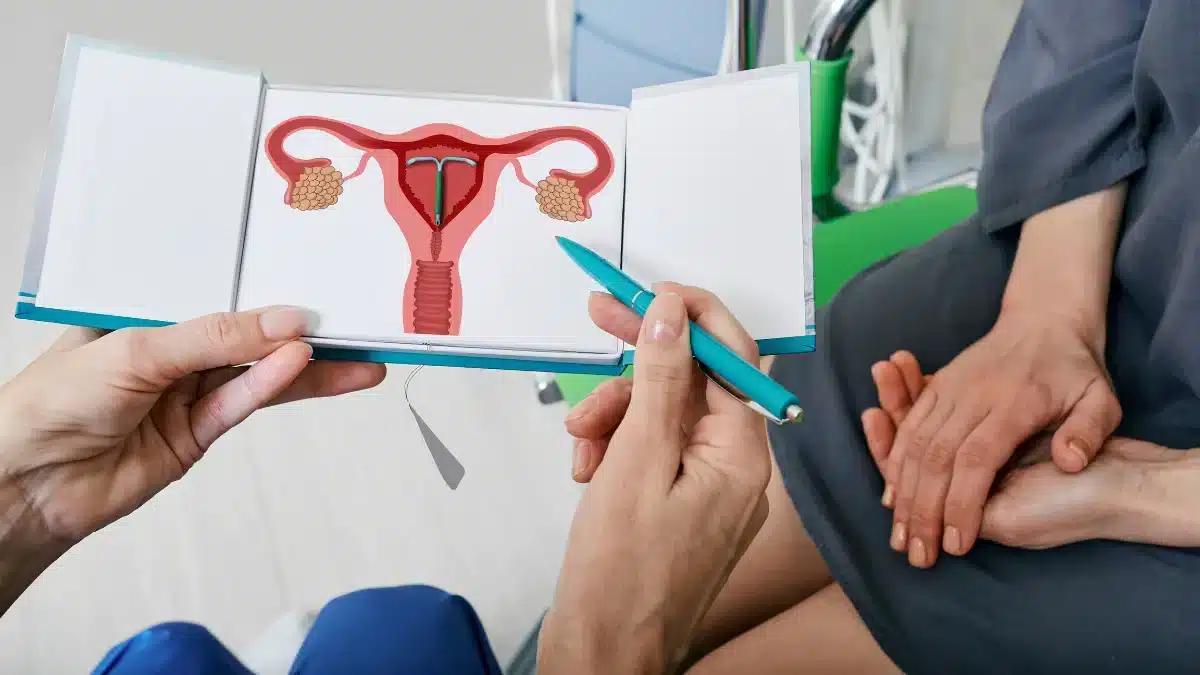The Rare Risk of IUD Perforation: Its Causes, Symptoms, and More
Intrauterine Devices (IUDs) are a popular long-term contraception, and they are generally safe and effective.
However, there are risks associated with it, and one of them is IUD perforating through the uterine wall during insertion.
The first description of uterine perforation using IUDs dates back to the 1930s.
While IUD perforation is a serious consideration, it is an exceptionally rare event.
With proper care, the majority of women use IUDs without complications.
This article covers information such as signs of IUD perforation, prevention, and effective treatment that ensures a positive outcome.
IUD perforation symptoms

One of the first signs of IUD perforation is the inability to feel the threads, which is usually caused by the threads curling up into the cervix.
It doesn’t usually cause any other symptoms, i.e. it is asymptomatic.
However, IUD perforation can cause a range of symptoms in some people.
Some of the potential IUD uterine perforation symptoms are:
- Intense pelvic pain following insertion-much greater than menstrual cramps
- Prolonged pain or severe bleeding that lasts more than a few weeks
- Abrupt changes in menstruation
- Discomfort during sexual activity
- Inability to feel the threads
Urinary tract perforation symptoms may include:
- Dysuria (painful urination)
- Frequency
- Suprapubic pain
- Hematuria (blood in urine)
- Recurrent Urinary Tract Infections
If the IUD perforates the bowel, it can cause bowel injury.
This may lead to IUD bowel perforation symptoms such as abdominal pain, Diarrhea, fever, and rectal bleeding.
In some cases, bowel perforation can be asymptomatic, and the perforation may be discovered as an incidental finding during surgery or imaging tests.
Should there be any suspicion of IUD perforation, seeking immediate medical attention is paramount.
What causes IUD perforation
Common causes include insertion errors and anatomical variations among women.
The majority of instances are caused by traumatic perforations that happen during implantation.
However, “secondary” perforation can also occur by gradual erosion.
The uterus is the most common site of IUD organ perforations, but once the device fully pushes through the uterus, it can travel to other parts of the body and cause injuries.
What are the risk factors for IUD perforation
The risk factors for IUD (Intrauterine Device) perforation include
- Insertion during lactation: Women who are lactating at the time of insertion have a higher risk of perforation compared to women who are not lactating
- Insertion within 36 weeks after giving birth: The risk of perforation is increased when the IUD is inserted up to 36 weeks after giving birth compared to more than 36 weeks after delivery
- Parity (number of times a woman has given birth): Women with a parity of 4 or greater have a higher risk of perforation
Before inserting an IUS or IUD, it is essential to inform women of the risk and the symptoms of perforation.
It is crucial to take all steps to insert devices safely and to diagnose and manage perforation appropriately.
How to avoid IUD perforation

Healthcareproviders play a crucial role in preventing IUD perforation by following proper insertion techniques.
Open communication and thorough patient education are key.
Here are some tips on how to avoid IUD perforation:
- Choose an experienced healthcare provider: Choosing a healthcare provider experienced in IUD insertion is important. An experienced provider is likelier to have a lower rate of complications, including perforation
- Check for contraindications: Before inserting an IUD, your healthcare provider should check for any contraindications, such as a history of Pelvic Inflammatory Disease or abnormal uterine bleeding. These conditions may increase the risk of perforation
- Insert the IUD during menstruation: IUD insertion is easier during or immediately after menstruation. This is because the cervix is more open during this time, making inserting the IUD easier
- Check the position of the uterus: Before inserting the IUD, your healthcare provider should check the position of your uterus. This can ensure that the IUD is inserted correctly and reduce the risk of perforation
- Follow-up after insertion: After the IUD is inserted, it is important to follow up with your doctor to ensure that it is in the correct position and that there are no signs of complications, such as perforation
Read Can’t Feel IUD Strings: Understanding Causes and When to Seek Medical Attention to learn what to do if you can’t sense the threads.
IUD perforation treatment
The diagnosis is easily made by way of vaginal ultrasound or abdominal X-ray, and the method of treatment is usually Laparoscopy.
The treatment for IUD perforation typically involves the removal of the IUD.
In the event of IUD perforation, surgery is often required to remove the displaced device.
The accepted treatment for IUD-associated perforations has been abdominal surgery, initially via Laparotomy and, as surgical techniques have developed, via Laparoscopy.
Conclusion
IUD perforation is a rare but serious risk associated with the use of Intrauterine Devices.
Proper care and insertion techniques can prevent IUD perforation, and patients should be thoroughly educated about the risks and symptoms before getting an IUD.
IUD perforation symptoms include the inability to feel the strings and pelvic pain.
The risk factors for IUD perforation include inserting during lactation and higher parity.
By choosing an experienced healthcare provider, checking for contraindications, inserting the IUD during menstruation, checking the position of the uterus, and following up after insertion, the risk of perforation can be reduced.
IUD perforation can be diagnosed and treated using abdominal surgery such as Laparoscopy.
If there is any suspicion of perforation, seeking immediate medical attention is crucial.
Rest assured, with proper care, individuals can resume their normal activities without significant disruptions.
Frequently Asked Questions
What happens if an IUD perforates?
If an IUD perforates, it can migrate outside the uterus, potentially causing damage to nearby organs. This may lead to pain, infection, or other complications, requiring prompt medical attention and possibly removal.
What are the symptoms of a moved IUD?
Symptoms of a displaced Intrauterine Device (IUD) may include pelvic pain, unusual bleeding, changes in menstrual flow, and discomfort during intercourse. If you suspect your IUD has moved, consult a healthcare professional promptly.
How do you prevent uterine perforation with IUD?
To prevent uterine perforation with an intrauterine device (IUD), healthcare providers must accurately measure the uterus before insertion, use appropriate insertion techniques, and ensure proper training for healthcare professionals performing the procedure.
How do you treat a perforated IUD?
The treatment for a perforated IUD typically involves the removal of the IUD. Minimally invasive procedures, including Hysteroscopy and Advanced Laparoscopy, are appropriate for diagnosing and treating perforated IUDs.
WowRx uses only high-quality sources while writing our articles. Please read our content information policy to know more about how we keep our content reliable and trustworthy.






